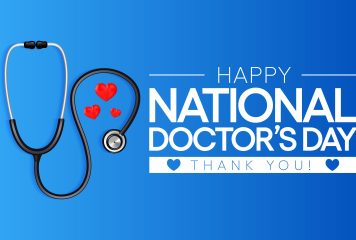1762: James Derham was the first black person to receive a certificate to practice medicine in the US. He won his freedom and set up his own practice in New Orleans.
The 1912 edition of the Journal of the National Medical Association recounted the story of James Derham’s medical success: James Derham was born into slavery and owned by a physician in Philadelphia, Pennsylvania. In 1788 he was sold to a prominent surgeon in New Orleans, Louisiana. Impressed by Derham’s aptitude, the surgeon allowed Derham to purchase his freedom by working as a nurse. Derham later opened his own practice in New Orleans without ever formally receiving a medical degree. At 21 he was considered a “distinguished surgeon” and sought out by the aristocrats of the South. Dr. Benjamin Rush, a renowned Philadelphia physician and signer of the Declaration of Independence, said of Derham, “I thought I could give him information concerning the treatment of disease, but I learned more from him than he could expect from me.”
1864: Rebecca Lee Crumpler became the first black woman doctor in the U.S. She graduated from, what is now, Boston University School of Medicine.
In her Book of Medical Discourses, published in 1883, Rebecca Lee Crumpler gives a brief summary of her career path:
“It may be well to state here that, having been reared by a kind aunt in Pennsylvania, whose usefulness with the sick was continually sought, I early conceived a liking for, and sought every opportunity to relieve the sufferings of others. Later in life I devoted my time, when best I could, to nursing as a business, serving under different doctors for a period of eight years (from 1852 to 1860). From these doctors I received letters commending me to the faculty of the New England Female Medical College, whence, four years afterward, I received the degree of doctress of medicine.”
When she graduated in 1864, Crumpler was the first African American woman in the United States to earn a medical degree, and the only African American woman to graduate from the New England Female Medical College, which closed in 1873. Her book is one of the very first medical publications by an African American.
1940: Dr. Charles Drew pioneered techniques for separating and preserving blood components-especially blood plasma. His expertise saved thousands of lives during World War II.
Dr. Charles Drew attended McGill University School of Medicine in Canada, because, at the time, America’s top medical schools were not accepting black students. Dr. Drew went on to revolutionize ways to process and store blood plasma in order to save thousands of soldiers during World War II. He directed the blood plasma programs of the United States and Great Britain in World War II, but resigned after a ruling that the blood of African-Americans would be segregated. After creating two of the first blood banks, Drew returned to Howard University in 1941. He served as a professor there, heading up the university’s department of surgery and became the chief surgeon at Freedmen’s Hospital. Later that year, he became the first African-American examiner for the American Board of Surgery.
1975: Morehouse School of Medicine is founded by Dr. Louis Sullivan who later served as Secretary of Health & Human Services.
Dr. Louis Sullivan founded the Boston University Hematology Service at Boston City Hospital. He later moved back to Atlanta and founded the medical education program at Morehouse College, a prestigious historically black college. The Morehouse School of Medicine became independent from Morehouse College in 1981, with Sullivan as president and dean. He continued as president through 1989, when he took a leave of absence after being appointed to serve as Secretary of Health and Human Services (HHS). As head of HHS, Sullivan’s responsibility extended to the health and welfare of the country. He battled the tobacco industry and championed victims of AIDS. Sullivan also hosted the public television show “Frontiers of Medicine” and he is the founding president of the Association of Minority Health Professions.
1992: Dr. Mae Jemison became the first black female astronaut to complete a space mission.
Dr. Mae Jemison has a background in both engineering and medical research. She has worked in the areas of computer programming, nuclear magnetic resonance spectroscopy, reproductive biology, and more. In the 1980s, Dr. Jemison was the Area Peace Corps Medical Officer for Sierra Leone and Liberia in West Africa. Her task of managing the health care delivery system for U.S. Peace Corps and U.S. Embassy personnel included provision of medical care, supervision of the pharmacy and laboratory, medical administrative issues, and supervision of medical staff. She developed curriculum, wrote manuals for self-care, developed and implemented guidelines for public health/safety issues. Dr. Jemison developed and participated in research projects on the Hepatitis B vaccine, schistosomiasis and rabies in conjunction with the National Institute of Health and the Center for Disease Control. On return to the U.S., Dr. Jemison was working as a General Practitioner and attending graduate engineering classes in Los Angeles when selected to the astronaut program. Dr. Jemison was the science mission specialist on STS-47 Spacelab-J, a cooperative mission between the U.S. and Japan. Dr. Jemison was a co-investigator on the bone cell research experiment flown on the mission. In completing her first space flight, she logged 190 hours, 30 minutes and 23 seconds in space.



